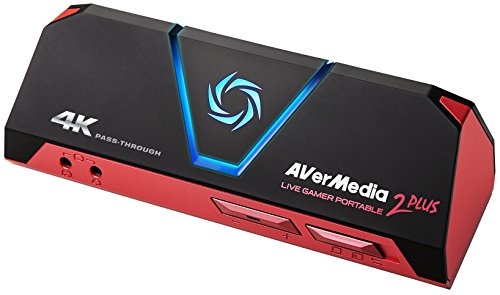It is pretty unlikely that your laptop will have an HDMI input capability as standard.
There are some rare models out there that are very highly specified and cost a lot of money that do have this functionality. But the vast majority do not.
Why would you want an HDMI input feature on your laptop?
Well, maybe you like the idea of using the screen on your laptop for console games, or you might want to use it as an additional monitor for a desktop computer.
With an HDMI input on your laptop, you basically have another display that is portable.
Why is HDMI Input Rare for a Laptop?
The main reason that you do not have an HDMI input capability with your laptop is that all incoming HDMI signals require decoding.
To perform this decoding, you need specialized hardware that you will only find on a handful of high-end laptops these days.
Not only that, but usually a laptop screen is an LCD panel and these have different voltage arrangements to a regular TV monitor for example.
A TV uses a system of low voltage differential signaling and the connectors used on a TV are different from those on a laptop.
You might think that an HDMI connector is the same on any device, but if you try to plug in the output from a gaming console to your laptop HDMI, then you will get nothing on the screen.
There will be no transference of the output signals.
Most laptops do not have the hardware capability to support intense video games that you would run on a PlayStation or Xbox gaming console.
Your laptop would require a high specification graphics card and a very good display to present these types of games from a console properly.
If you are not sure if your laptop has an HDMI input, then you can easily check this. For HDMI ports to have the input function, they will usually be labeled outside as “HDMI In” or similar.
It is much more likely that your laptop will have HDMI out only. This will not usually have a label as it is the standard solution.
You will have more than one HDMI port if your laptop supports HDMI in.
How to change HDMI on Laptop
You cannot just change your HDMI output port to an input port on your laptop. There is complex circuitry involved here, but you can use an external adapter which we will discuss later.
You can change your HDMI settings to connect to a projector, but you may not need to do this.
How to Get HDMI Input on Laptop
There are some solutions available for reading HDMI input signals. There are USB HDMI capture boxes on the market which enable you to do this.
Most of these devices introduce latency, so you cannot use them to play games directly from a gaming console using your laptop screen because there is too much of a delay in processing the HDMI signal.
Usually, people use these HDMI capture boxes to record HDMI input on their laptop.
Some people make videos about console-based computer games and stream the HDMI data to their laptop screen through a capture box.
We are not saying that all USB capture devices have a lot of latency.
AverMedia make a very good live gamer capture box that will allow 4K pass through. It is one of the best HDMI capture boxes we have tested and worked well for all but the most intense games with a slight lag.
It is easy to set up on your laptop. We recommend that you use OBS Studio for the streaming.
Prices pulled from the Amazon Product Advertising API on:
Product prices and availability are accurate as of the date/time indicated and are subject to change. Any price and availability information displayed on [relevant Amazon Site(s), as applicable] at the time of purchase will apply to the purchase of this product.
Your HDMI capture box will connect with an HDMI splitter (yes, you need to purchase one of these as well, but they are usually reasonably cheap) and will provide the HDMI input signal to your laptop using an HDMI out port on the capture box.
With the above setup, you can use your laptop screen to display games from an Xbox, Nintendo Switch, Sony PSP, Playstation, and more.
You can power the AverMedia box using a USB connection from your laptop and the box has a Micro SD slot.
Another way that you can use your laptop as an external screen for HDMI output from game consoles, etc., to use Wi-Fi and software.
With Windows 10, a Miracast feature enables you to use your laptop monitor as an external display if the devices are on the same Wi-Fi network. An example of this could be a laptop and a desktop PC.
Windows 10 laptops have a “project to this PC” feature. If your laptop supports this feature, you can go to the settings and make this “always on.”
Do the same with your desktop PC as well. When you are in the menu for projection, you need to select “connect to a wireless display,” and you should find your laptop available.
Now your laptop monitor will function as a second monitor for your desktop PC.
There is software available from third-party suppliers such as SpaceDesk. This requires the use of a Wi-Fi network, as the Windows 10 solution does.
How to Switch to HDMI on Laptop
It is relatively easy to switch a Windows 10 laptop to HDMI. Let’s say that you want to output your laptop screen to a large TV monitor using an HDMI cable.
We recommend that you turn off your TV and laptop and then connect your HDMI cable from one device to the other.
Now turn both devices on again. You may need to change the “source” on your TV to HDMI input. Some TVs have more than one HDMI input, so be careful here.
With most laptops, the HDMI output will happen automatically, and you will see your laptop screen on your TV.
If you do not see your laptop screen on your TV after connecting your HDMI cable, you will need to adjust some settings to correct this.
Go to “settings” in Windows 10 and then look for playback devices. A new tab will open, and then you can select HDMI or digital output device.
Conclusion
You will probably not have an HDMI input on your laptop as most do not have them. By purchasing a good HDMI capture box, you can connect a gaming console HDMI output to your laptop and play some games.
If you have a desktop computer and want to use your laptop screen as a second monitor, you can set this up if both machines use Windows 10. This will work over a Wi-Fi network. There are other software solutions that will do this as well.





Be the first to comment